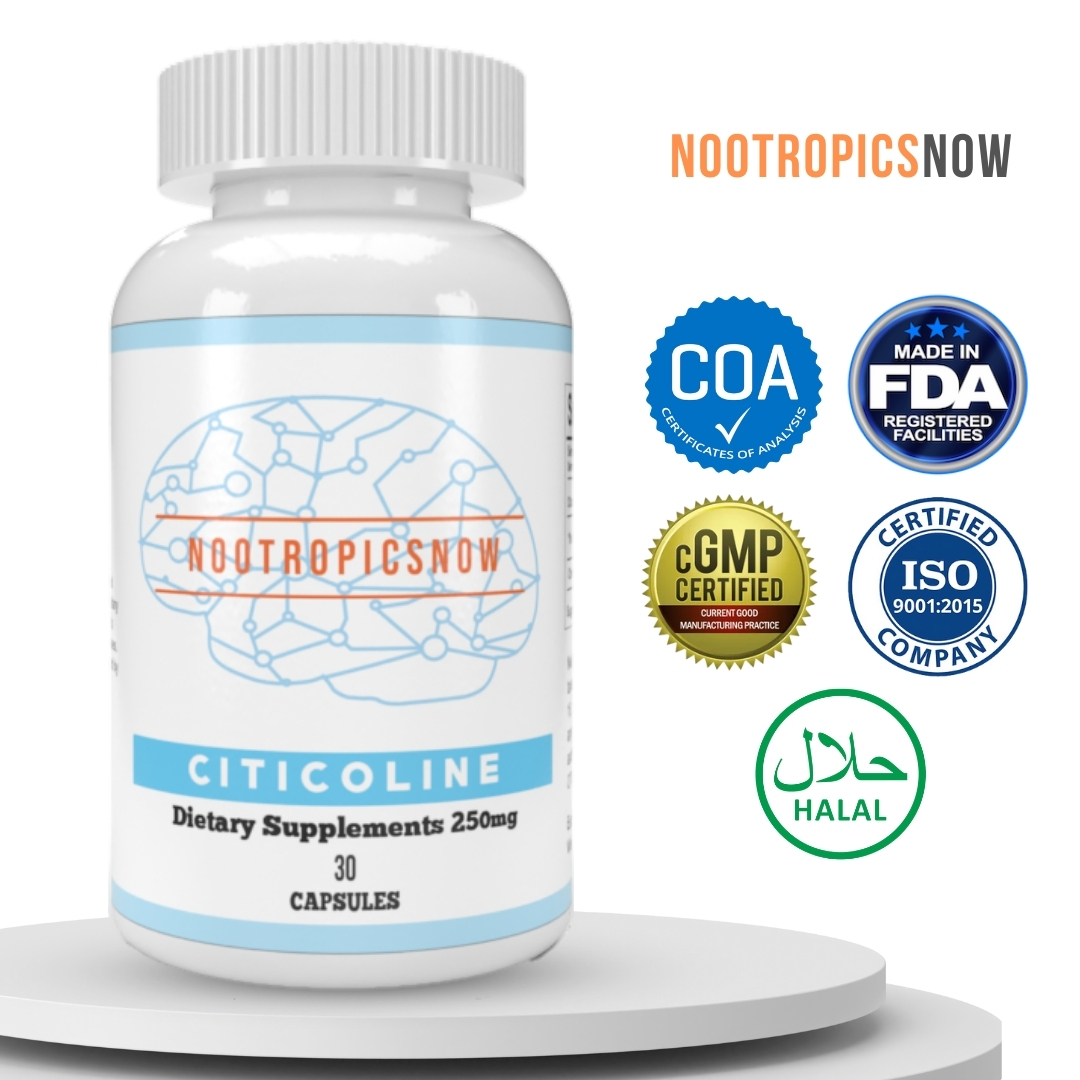Piracetam Side Effects: What You Need to Know

Piracetam Side Effects: A Detailed Guide to Potential Risks
Piracetam, one of the first synthesized nootropics, continues to be a popular choice for individuals seeking cognitive enhancement, although its efficacy is still debated within the scientific community. However, like all medications and supplements, piracetam carries the potential for side effects. Understanding these side effects is crucial for anyone considering or currently using piracetam. This comprehensive guide explores the known side effects of piracetam, offering detailed information to help users make informed decisions about its use.
Common Piracetam Side Effects: What to Expect

While many users report positive effects from piracetam, a significant number experience adverse reactions. The severity and frequency of these side effects vary from person to person, depending on factors such as dosage, individual sensitivity, and pre-existing health conditions. Therefore, understanding these potential issues is vital for safe and effective use.
Nervous System-Related Side Effects
Piracetam primarily affects the central nervous system, and thus, many of its side effects manifest in this area. These effects can range from mild disturbances to more significant neurological symptoms.
Hyperkinesia (Hyperactivity and Restlessness): One of the most commonly reported side effects is hyperkinesia, characterized by excessive physical activity, restlessness, and an inability to stay still. This can manifest as fidgeting, pacing, or an overall sense of unease. Individuals with pre-existing anxiety disorders may find this side effect particularly bothersome. Therefore, start with a low dose to mitigate this side effect.
Insomnia (Difficulty Sleeping): Paradoxically, despite some users experiencing drowsiness, insomnia is a relatively common side effect. It may involve difficulty falling asleep, frequent awakenings during the night, or a general feeling of unrest. Therefore, taking piracetam early in the day can help reduce the likelihood of sleep disturbances. Additionally, the drug is known to alter sleep cycles.
Headaches: Headaches are a frequently reported side effect, often described as a mild to moderate throbbing or pressure. These headaches may be due to increased neuronal activity or changes in neurotransmitter levels. Some users find that choline supplementation can help mitigate these headaches.
Anxiety: While some individuals report improved mood with piracetam, others experience increased anxiety. This may be due to the stimulating effects of the drug or its influence on neurotransmitter systems involved in regulating mood and emotion. Anxiety can range from mild nervousness to more severe panic attacks.
Dizziness: Dizziness is another common complaint, which can be a result of the drug’s effects on the brain’s vestibular system, responsible for balance and spatial orientation. This can lead to feelings of lightheadedness, vertigo, or unsteadiness.
Gastrointestinal Side Effects
Piracetam can also affect the gastrointestinal system, leading to digestive discomfort in some users.
Nausea: Nausea is a frequently reported side effect, especially when starting piracetam or increasing the dosage. This sensation of queasiness can be accompanied by a loss of appetite and general discomfort.
Diarrhea: Diarrhea, characterized by loose, watery stools, is another gastrointestinal side effect that some users experience. This can be caused by the drug’s influence on gut motility and the absorption of fluids in the intestines.
Abdominal Pain: Abdominal pain, ranging from mild cramping to more severe discomfort, can also occur. This pain may be related to changes in gut motility, inflammation, or altered digestive processes.
Psychological Side Effects
Piracetam can also influence psychological states, potentially leading to alterations in mood, behavior, and cognitive processes.
Depression: Although some users report improved mood, others may experience depression as a side effect. This can be particularly concerning for individuals with a history of mood disorders. If depressive symptoms occur, discontinuation of piracetam and consultation with a healthcare professional are advised.

View Product
Agitation: Agitation, characterized by restlessness, irritability, and emotional distress, can occur, especially in children and individuals with pre-existing anxiety disorders. This side effect can manifest as increased irritability, impatience, and a general sense of unease.

View Product
Confusion: Piracetam can, in rare cases, cause confusion, especially in older adults or those with pre-existing cognitive impairments. This confusion can manifest as disorientation, difficulty thinking clearly, and impaired decision-making abilities.
Other Less Common Side Effects
In addition to the above, several less common side effects have been reported.
Weight Gain: Some users report experiencing weight gain while taking piracetam. The exact mechanism behind this is not fully understood, but it may be related to changes in appetite, metabolism, or fluid retention.
Increased Libido: In some individuals, piracetam has been associated with an increase in libido or sexual arousal. While this can be a positive effect for some, it may be undesirable for others.

View Product
Allergic Reactions: Although rare, allergic reactions to piracetam can occur. These reactions can range from mild skin rashes to more severe symptoms like hives, swelling, and difficulty breathing. If any signs of an allergic reaction appear, discontinue use immediately and seek medical attention.
Blood Dyscrasias (Blood Disorders): While rare, piracetam has been associated with blood dyscrasias, including bleeding disorders. Therefore, individuals with pre-existing bleeding disorders or those taking anticoagulant medications should exercise caution and consult with a healthcare professional before using piracetam.
Muscle Spasms: Muscle spasms, or involuntary muscle contractions, can occur in some individuals taking piracetam. These spasms may be localized or widespread and can be painful and disruptive.
Rare but Serious Side Effects
Although rare, some serious side effects associated with piracetam require immediate medical attention. If you experience any of these, discontinue use and consult a healthcare professional immediately.
Stevens-Johnson Syndrome (SJS)
Stevens-Johnson Syndrome (SJS) is a rare but serious skin disorder that can be triggered by certain medications, including piracetam. SJS is characterized by flu-like symptoms followed by a painful rash that spreads and blisters. It can also affect the mucous membranes, such as the mouth and eyes. SJS is a medical emergency and requires immediate hospitalization.
Toxic Epidermal Necrolysis (TEN)
Toxic Epidermal Necrolysis (TEN) is a more severe form of SJS, characterized by widespread blistering and peeling of the skin. TEN is also a medical emergency and requires immediate hospitalization.
Managing and Mitigating Side Effects
While the potential for side effects is a concern, many can be managed or mitigated through careful use and appropriate strategies.
Start with a Low Dose: Beginning with a low dose of piracetam and gradually increasing it allows your body to adjust to the drug and minimizes the risk of side effects.
Stay Hydrated: Dehydration can exacerbate some side effects, such as headaches and nausea. Therefore, ensure you are drinking plenty of water throughout the day.
Consider Choline Supplementation: Piracetam increases the demand for acetylcholine in the brain. Some users find that choline supplementation (e.g., Alpha GPC, CDP-Choline) can help alleviate headaches and other side effects associated with acetylcholine depletion.

View Product

View Product
Avoid Combining with Other Stimulants: Combining piracetam with other stimulants, such as caffeine, can increase the risk of anxiety, insomnia, and other nervous system-related side effects.

View Product
Monitor Your Symptoms: Keep a journal to track your symptoms and any side effects you experience. This can help you identify patterns and adjust your dosage accordingly.
Consult with a Healthcare Professional: If you experience significant or persistent side effects, consult with a healthcare professional. They can help you determine whether piracetam is right for you and provide guidance on managing any adverse effects.
Take Breaks: Cyclical usage of piracetam is a popular way to avoid long-term side effects.
Who Should Avoid Piracetam?
Certain individuals should avoid using piracetam altogether due to potential risks.
Pregnant and Breastfeeding Women: Piracetam is contraindicated during pregnancy and breastfeeding due to insufficient evidence of its safety in these conditions.
Individuals with Bleeding Disorders: Piracetam can increase the risk of bleeding. Therefore, individuals with pre-existing bleeding disorders or those taking anticoagulant medications should avoid it.
Individuals with Severe Kidney Disease: Piracetam is primarily eliminated by the kidneys. Therefore, individuals with severe kidney disease may experience an increased risk of side effects.
Individuals with a History of Stroke: Piracetam has been reported to increase the risk of stroke in some individuals, so those with a history of stroke should avoid it.
Individuals with a Known Allergy to Piracetam: Anyone with a known allergy to piracetam or related compounds should avoid using it.
Piracetam Interactions with Other Medications
Piracetam can interact with several other medications, potentially leading to adverse effects. It’s crucial to be aware of these potential interactions before starting piracetam.
Anticoagulants (Blood Thinners): Piracetam can increase the risk of bleeding, especially when taken with anticoagulant medications like warfarin or aspirin.
Thyroid Hormones: Piracetam may enhance the effects of thyroid hormones, potentially leading to hyperthyroidism.
Central Nervous System Depressants: Combining piracetam with CNS depressants, such as alcohol, sedatives, or tranquilizers, can increase the risk of drowsiness and other nervous system-related side effects.
Other Nootropics: Combining piracetam with other nootropics, especially stimulants, can increase the risk of anxiety, insomnia, and other adverse effects.
Therefore, it’s essential to inform your healthcare provider of all medications and supplements you are taking before starting piracetam.
Conclusion
Piracetam is a nootropic that has demonstrated cognitive benefits for some users. However, like all drugs, it’s not without its potential side effects. Common side effects include hyperactivity, insomnia, headaches, nausea, and anxiety. Rarer but more serious side effects include Stevens-Johnson Syndrome and blood dyscrasias.

View Product
By understanding the potential risks and taking appropriate precautions, users can minimize their chances of experiencing adverse effects and maximize the benefits of piracetam. Consulting with a healthcare professional is essential before starting piracetam, especially if you have pre-existing health conditions or are taking other medications. By staying informed and proactive, you can make a more informed decision about whether piracetam is right for you.
Piracetam Side Effects: A Deep Dive
Piracetam is a synthetic derivative of gamma-aminobutyric acid (GABA), originally synthesized in 1964. While widely recognized for its potential cognitive-enhancing properties, it’s crucial to understand the spectrum of piracetam side effects before considering its use. These side effects can range from mild discomfort to more severe reactions, influencing an individual’s decision to incorporate this nootropic into their regimen. This section aims to provide a comprehensive overview of the possible adverse effects associated with piracetam, enabling informed decision-making and responsible usage.
Common Piracetam Side Effects: A Closer Look
Several side effects are frequently reported by individuals using piracetam. While not everyone experiences these, understanding their nature and frequency is vital.
Headaches: Headaches represent one of the most prevalent piracetam side effects. They often manifest as a dull, persistent ache, and their intensity can vary significantly. The underlying mechanism for these headaches is not fully understood; however, some theories suggest they relate to increased neuronal activity or acetylcholine depletion.
Management: Staying adequately hydrated and supplementing with choline sources (like CDP-choline or Alpha-GPC) are frequently recommended.

View Product

View Product
Choline serves as a precursor to acetylcholine, and ensuring sufficient levels may alleviate these headaches. Dosages of choline supplements typically range from 300mg to 600mg daily, adjusted based on individual response.
Nervousness and Anxiety: Piracetam can affect neurotransmitter systems, potentially leading to heightened nervousness or anxiety. This can be particularly pronounced in individuals predisposed to anxiety disorders. The altered neurotransmitter balance can manifest as restlessness, irritability, or even panic-like symptoms.
Management: Lowering the piracetam dosage is a common first step. Combining piracetam with calming agents like L-theanine (200mg daily) or magnesium (200-400mg daily) might also help mitigate these effects.

View Product
Mindfulness practices and regular exercise are other non-pharmacological approaches that can contribute to anxiety reduction.
Insomnia: Disrupted sleep patterns, specifically insomnia, are relatively common. The stimulating effects of piracetam can interfere with the natural sleep-wake cycle, making it difficult to fall asleep or stay asleep. This can result in daytime fatigue and reduced cognitive function, counteracting the intended benefits.
Management: Taking piracetam early in the day, avoiding evening doses, and practicing good sleep hygiene (consistent sleep schedule, dark room, no screen time before bed) are essential. Magnesium glycinate can also be added at night (200-400mg) to improve sleep.
Gastrointestinal Issues: Some individuals report gastrointestinal disturbances, including nausea, diarrhea, or stomach cramps. These symptoms can disrupt daily activities and affect overall well-being.
Management: Taking piracetam with food can sometimes alleviate gastrointestinal distress. Reducing the dosage or splitting it into smaller, more frequent doses may also help. Probiotic supplements may also contribute to gut health and mitigate some digestive issues.
Hyperactivity: Paradoxically, while some users experience drowsiness, others may become excessively active or restless. This can manifest as difficulty sitting still, fidgeting, or an increased urge to move around.
Management: Reducing the piracetam dose is usually the initial approach. Engaging in regular physical activity can help channel this excess energy productively.
Uncommon but Notable Piracetam Side Effects
While less common than the previously discussed side effects, these adverse effects warrant attention due to their potential impact on health and well-being.
Depression: Although rare, some users have reported experiencing depressive symptoms while taking piracetam. This can range from mild mood changes to more significant episodes of depression. It is important to distinguish between a transient mood dip and a more serious depressive condition.
Management: Discontinuing piracetam is generally recommended if depressive symptoms emerge. Consulting a mental health professional is crucial to assess the severity and explore appropriate treatment options, which may include therapy or antidepressant medication.
Weight Gain: Weight gain has been reported by some users, though the exact mechanism is unclear. It may be related to changes in appetite, metabolism, or fluid retention.
Management: Monitoring diet and exercise habits is crucial. Maintaining a balanced diet and engaging in regular physical activity can help manage weight. Consulting a healthcare professional or registered dietitian can provide personalized advice.
Skin Rashes: Allergic reactions to piracetam can manifest as skin rashes, itching, or hives. These reactions can vary in severity and may require medical intervention.
Management: Discontinuing piracetam is essential if any signs of an allergic reaction appear. Antihistamines can help relieve itching and inflammation. Seek immediate medical attention if the rash is severe or accompanied by difficulty breathing.
Changes in Blood Pressure: Piracetam can affect blood pressure, either increasing or decreasing it in certain individuals. People with pre-existing blood pressure conditions should exercise extra caution.
Management: Monitoring blood pressure regularly while taking piracetam is crucial, especially for those with hypertension or hypotension. Consulting a healthcare provider is essential to adjust medication as needed and manage any blood pressure fluctuations.
Increased Bleeding Risk: Due to its effects on platelet aggregation, piracetam can increase the risk of bleeding, particularly in individuals taking anticoagulant or antiplatelet medications.
Management: Individuals on blood thinners should exercise caution and discuss piracetam use with their healthcare provider. Monitoring for signs of excessive bleeding, such as nosebleeds, easy bruising, or blood in the stool or urine, is crucial.
Rare but Serious Piracetam Side Effects
These side effects are infrequent but can be severe and require immediate medical attention.
Seizures: While piracetam is sometimes used to treat myoclonus (muscle spasms), it can paradoxically trigger seizures in some individuals, especially those with a history of epilepsy or seizure disorders.
Management: Piracetam should be immediately discontinued, and emergency medical care should be sought.
Severe Allergic Reactions (Anaphylaxis): Although rare, anaphylactic reactions to piracetam can be life-threatening. Symptoms may include difficulty breathing, swelling of the face or throat, and a sudden drop in blood pressure.
Management: This requires immediate medical intervention with epinephrine (EpiPen) and supportive care.
Mental Confusion or Psychosis: Very rarely, piracetam has been associated with mental confusion, hallucinations, or psychotic episodes, particularly in individuals with pre-existing mental health conditions.
Management: Discontinuing piracetam and seeking immediate psychiatric evaluation are necessary.
Interactions and Contraindications
Understanding potential drug interactions and contraindications is paramount before using piracetam.
Anticoagulants and Antiplatelet Drugs: Concurrent use of piracetam with anticoagulants (like warfarin) or antiplatelet drugs (like aspirin or clopidogrel) increases the risk of bleeding.
Recommendation: Avoid concomitant use or closely monitor for signs of bleeding.
Thyroid Hormones: Piracetam can interact with thyroid hormones, potentially altering thyroid function.
Recommendation: Monitor thyroid hormone levels if taking both piracetam and thyroid medication.
Individuals with Kidney Disease: Piracetam is primarily eliminated by the kidneys, and individuals with impaired kidney function may experience increased side effects due to drug accumulation.
Recommendation: Piracetam should be used with caution and at reduced doses in individuals with kidney disease.
Pregnancy and Breastfeeding: Due to a lack of sufficient safety data, piracetam is generally contraindicated during pregnancy and breastfeeding.
Recommendation: Avoid use during pregnancy and breastfeeding.
Minimizing Piracetam Side Effects: Practical Strategies
Several strategies can help minimize the risk and severity of piracetam side effects.
Start Low and Go Slow: Begin with a low dose of piracetam (e.g., 800mg per day) and gradually increase it as tolerated. This allows you to assess your individual sensitivity to the drug.
Stay Hydrated: Dehydration can exacerbate some side effects, such as headaches. Drink plenty of water throughout the day.
Cycle Piracetam: Consider cycling piracetam use (e.g., taking it for a few weeks or months followed by a break) to prevent tolerance and minimize the risk of side effects.
Monitor for Side Effects: Keep a detailed record of any side effects you experience, including their severity and timing. This can help you identify patterns and adjust your dosage or regimen accordingly.
Consult a Healthcare Professional: It is always advisable to consult with a healthcare professional before starting piracetam, especially if you have any pre-existing medical conditions or are taking other medications.
Conclusion
Piracetam, while potentially beneficial for cognitive enhancement, is not without potential side effects. Understanding these side effects, their management, and potential interactions is crucial for responsible use. By carefully monitoring your response to piracetam, employing practical strategies to minimize side effects, and consulting with a healthcare professional, you can maximize the potential benefits while mitigating the risks. Remember that individual responses to piracetam can vary considerably, so a personalized approach is always recommended.













